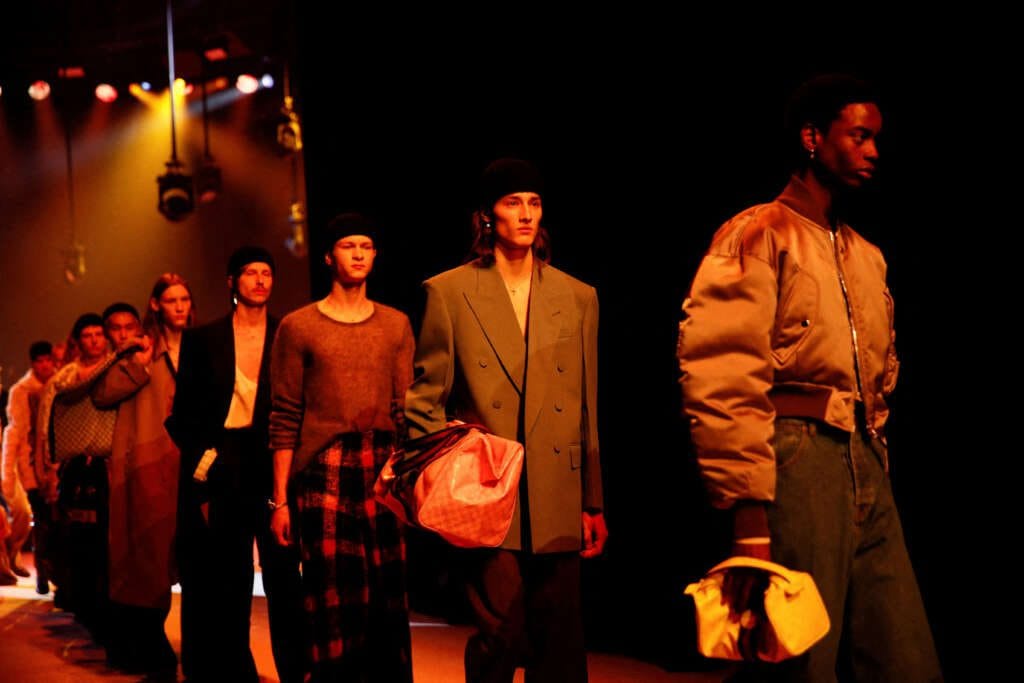
By Mimosa Spencer
PARIS (Reuters) – Gucci is banking on new ultra-high-end “salons” offering merchandise priced at up to $3 million to help narrow a widening gap with rival Louis Vuitton as it waits for its new creative director to arrive.
Chasing after the ultra-rich whose fortunes are largely immune to economic turbulence, Gucci will stock the new private boutiques with some of its highest-end clothing, furniture and jewellery.
“Nothing will cost less than $40,000, and it will go up to as much as $3 million for high jewellery,” Kering boss Francois-Henri Pinault said this week.
Gucci’s focus on its wealthiest clients is a key element of its growth strategy after the brand’s sales fell 14% in the last three months of 2022, dragged down by COVID-19 curbs in China and reduced appetite for its clothes in the United States – particularly among lower-spending shoppers.
New Gucci creative director Sabato De Sarno is set to take the helm in the second quarter and to present his first fashion show in September in Milan. But because De Sarno’s collections won’t hit the stores before next year, Gucci is under pressure to make sure it doesn’t lose more momentum in sales and margins in coming months.
“We are not just waiting for Sabato to arrive,” Pinault said, adding the label would promote an exhibit of its archives on a world tour with a first stop in Shanghai. It also will ramp up its presence on the catwalk – with a show in Milan this month and a cruise collection in Seoul in May.
Some of the new private salons will be within Gucci’s existing stores, while others will be in new boutiques, including on Los Angeles’ Melrose Avenue, opening in April.
Pinault conceded 2022 results for Gucci, which accounts for just over half of group sales and three quarters of its profit, fell short of his expectations. Kering was also hit by controversy over ads featuring children for its Balenciaga brand that dented year-end sales.
Between 2015-2019, Gucci’s profits increased nearly four-fold as sales almost trebled, lifted by the popularity of the eccentric, gender-fluid designs of Alessandro Michele.
But the brand has lost favour with shoppers since, just as rivals like LVMH’s Vuitton and Hermes maintained strong sales growth despite inflation and economic uncertainty. Michele departed Gucci abruptly in November after falling out with managers, sources told Reuters at the time.
Luxury insiders say the label — known for its iconic GG belts, crossbody bags and Horsebit Loafers — has struggled to regain ground since it pulled back on marketing investments during the pandemic. Meanwhile, Vuitton and fellow LVMH brand Dior pushed ahead, gaining prized market share.
MARKETING
Louis Vuitton spent 890 million euros on marketing investments in 2021, according to estimates from Bernstein, compared to 487 million euros by Gucci.
This Christmas Dior took over Harrod’s department store in London and hosted a fashion show in Egypt with the pyramids as a backdrop, while Vuitton’s January catwalk presentation featured a performance from Latin Grammy award winning pop-star Rosalia.
LVMH does not break down sales for its brands but its fashion and leather goods division, which is also home to Fendi and Givenchy, grew sales by 10% in the fourth quarter, though it too suffered from a surge in China’s COVID infections.
Vuitton exceeded 20 billion euros in revenue for the first time, almost double that of Gucci in 2022, and the label has just scored a major coup by hiring rapper Pharrell Williams as its new menswear creative director. Gucci, meanwhile, went for the relatively unknown 39-year old De Sarno, previously at Valentino.
Well-known outside of the fashion world, Williams’ debut runway show is scheduled for June.
After falling 4% after Kering announced its results on Wednesday, the group’s shares have since recovered to a level not seen in almost a year as Pinault’s commitment to put Gucci back on track reassures investors.
“Investor sentiment is turning less negative and rightly looking ahead to potential improvements at Gucci underpinned by new creative direction,” said RBC Capital Markets analyst Piral Dadhania.
(Editing by Silvia Aloisi and Kirsten Donovan)


